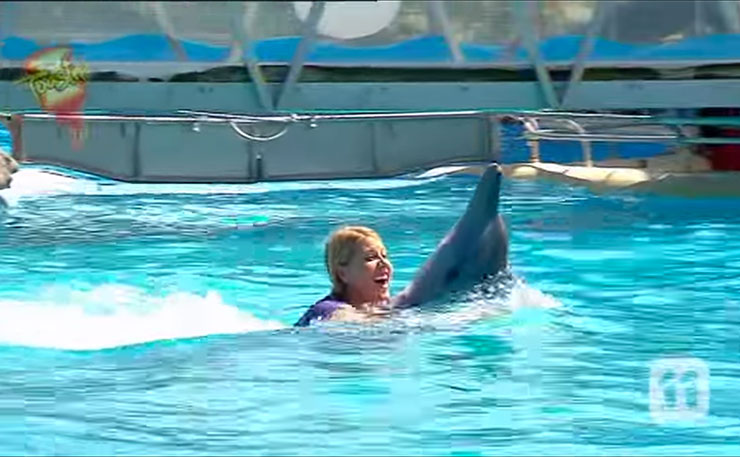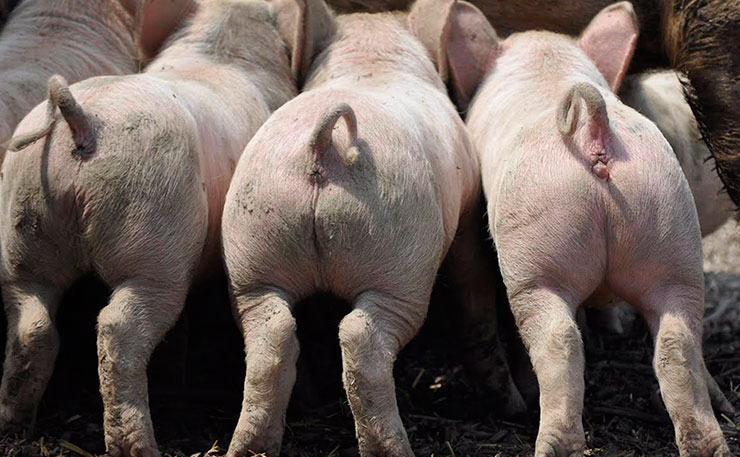Jordan Sosnowski weighs in on an infamous case in Canada, where an animal rights advocate was prosecuted for giving water to thirsty pigs bound for slaughter.
The case against Canadian woman and animal rights advocate Anita Krajnc was recently dismissed.
In making his decision, Justice David Harris asked: “Did Ms Krajnc obstruct, interrupt or interfere with the lawful use, enjoyment or operation of the property? My simple answer to this question is: No. She did not.”
While it is good news this compassionate woman will not be unfairly punished, the judgment brings home an indisputable reality – in the eyes of the law, all animals are “property”.
This unfortunate classification means that animals have just as many legal rights as inanimate objects (like a chair, for example). While inherently irrational, this legal absurdity is entirely necessary to ensure the continued large-scale and completely lawful abuse of billions of sentient beings.
Most people perhaps comfort themselves with the knowledge that the animals they eat led reasonably good lives. But in Australia, intensive and industrialised farming is the norm. Globally, around two-thirds of farm animals are raised in factory farms. The majority of pigs are kept on factory farms, meaning there’s a 90 per cent chance your pork began and ended its life miserably. Even when not on a factory farm, operations such as tail docking and castration can – and are – legally performed on farm animals without any pain relief.
While animal agriculture is by far the biggest and cruelest exploiter of the “animals-are-property” definition, it is by no means the only industry taking advantage of the law.
In the US alone, more than 100 million animals are killed in laboratories and used for medical testing. They are subject to poisonous fumes and painful chemicals. Holes are drilled into their heads, their spinal cords crushed, and parts of their bodies burned.
These experiments aren’t confined to “just” mice and rats. More than 7,000 dogs were used in invasive research procedures in Australia. Unwanted dogs like greyhounds are routinely used in archaic procedures involving deliberate suffocation – with no apparent clinical application.
When we’re not eating or testing on animals, we may be harming them by simply wanting to be close to them. Zoos and marine parks purport to play a role in educating people about conservation, however in reality most are simply forms of entertainment. Visitors aren’t told about the large amount of drugs required to keep the animal inmates from getting depressed, or the suffering involved in keeping intelligent animals in tiny enclosures so different to their natural environment.

In one case in Germany, zoo staff were prosecuted for euthanasing perfectly healthy tiger cubs. The employees’ justification was that the animals were “worthless mongrels” and would have taken up valuable space at the zoo. The tiny cubs were put to sleep not long after being born, when it was found out that their father was not 100 percent Siberian tiger. Though the court declared there was “no sufficient reason” to kill the healthy animals, the zoo workers received no fine or jail time.
And there’s the rub. As animals are legally regarded as mere “things”, their inherent worth is judged by their value or usefulness to others. They are used and abused by society, akin to modern-day slaves. This is despite the fact that animals feel myriad emotions and many have a distinct sense of self.
All is not completely lost though. Advocates in the US are litigating on behalf of chimpanzees, arguing their legal status should be changed from property to legal person. This is not to say that animals would be treated as humans. It would mean that in the eyes of the law, animals have some rights commensurate with their needs, rather than being treated as objects.
In Argentina, a landmark case arguing this point was recently successful and an orangutan who had spent her entire life in a zoo will now be moved to a sanctuary in Brazil.
The pigs that Anita Krajnc helped didn’t have this much luck. While their thirst was momentarily quenched, they were still subjected to lives of misery and pain.
In many ways, the prosecution of Krajnc represents an incredible waste of public resources. Yet it has inadvertently caused significant debate about whether we should obstruct, interrupt or interfere when animals are suffering.
If pigs are eventually declared legal persons, freedom from thirst and discomfort may well be their fundamental legal right. And from the inanimate object I’m seated in, this would be a very welcome interference with the status quo.
Donate To New Matilda
New Matilda is a small, independent media outlet. We survive through reader contributions, and never losing a lawsuit. If you got something from this article, giving something back helps us to continue speaking truth to power. Every little bit counts.






